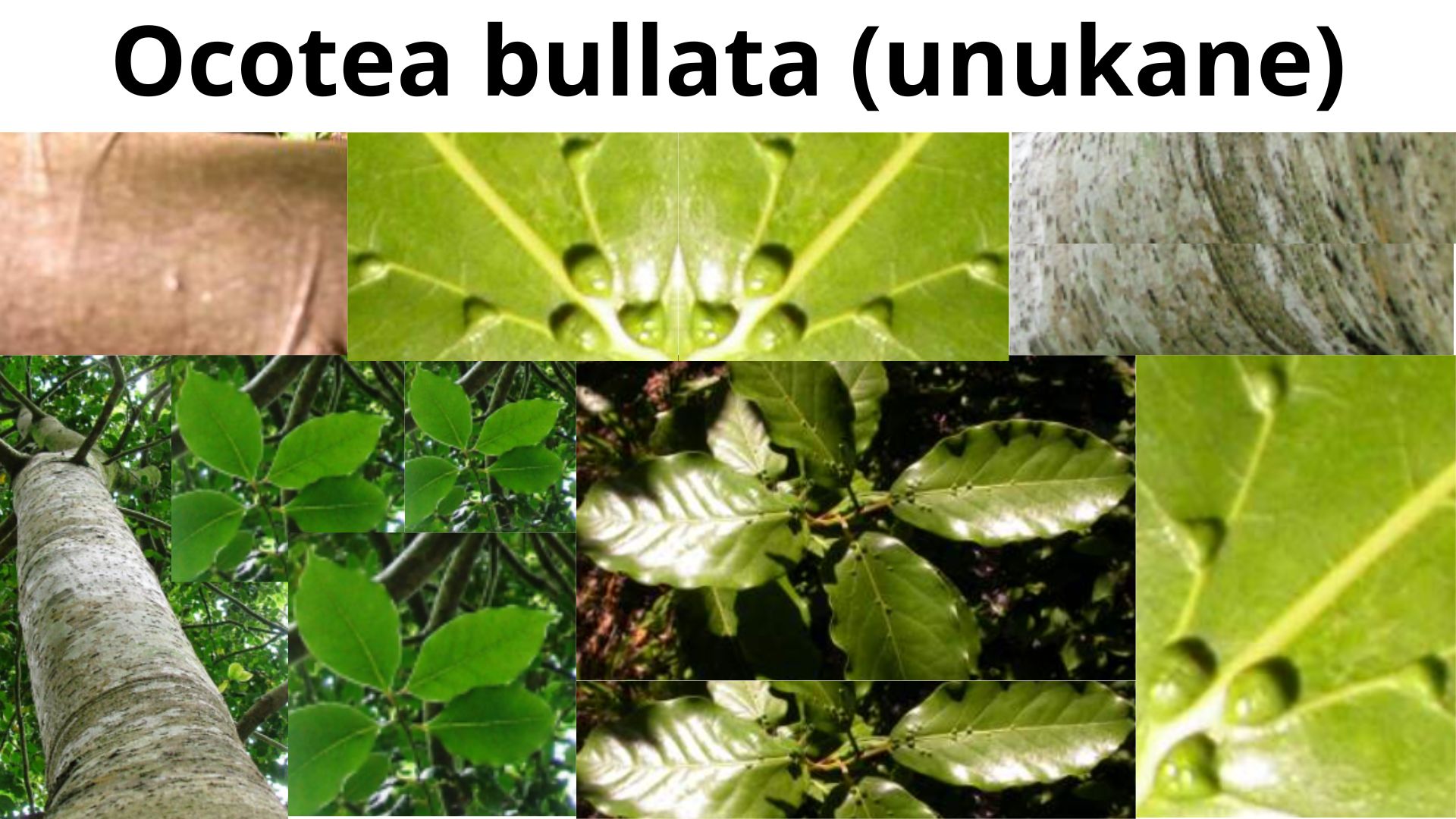Family: Lauraceae
Scientific name: Ocotea Bullata
Authority: (Burch.) Baill.
Common names: unukane (Zulu), stinkwood (Zulu), stinkhout (Afrikaans)
The tree gets the name, unukane, from the unpleasant smell released after harvesting or cutting. The name unukane is a Zulu word that translates to stinkwood in English. Stinkwood is also the trees’ common name.
Unukane is a hardwood – a type of wood produced by angiosperm (flowering) trees. Hardwoods are known for producing beautiful timber. Unukane’s hardwood is durable, heavy, and stable. Fitly, it was historically used to make furniture and for general carpentry. Furniture made from unukane is of high quality and very expensive.
Unukane is scientifically known as Ocotea bullata. The genus name Ocotea is a vernacular name in French Guiana – where it was first collected. It is the largest genus of the Lauraceae family with more than 300 species. The species name bullata means bubbles and refers to the bubbles in the base of the leaf. The leaves are large, glossy, and dark green with bubbles on the upper surface of leaves called bullae.
Unukane is a slow growing and slow reproducing indigenous tree. It is a medium to large evergreen tree that can reach a height that’s anywhere between 10 m to 30 m. Unukane is endemic to South Africa and can be found growing in provinces such as the Eastern Cape, KwaZulu Natal, Limpopo, Mpumalanga, and Western Cape.
Besides being used to make beautiful furniture, unukane is also one of the most traded plants in the traditional medicine market. It’s bark of is much sought after for its traditional medicinal properties. The bark changes with age, when young it is pale brown with a mottled appearance and when matured it is dark brown and flaky.
Unukane is over-exploited due to the high demand for its wood and bark. As a result, unukane has been added to the Red List of Endangered Species.
Even when debarkers are just debarking the bark without harvesting the tree for wood because some debarkers are unskilled, when debarking they cut into the tree’s vascular cambium killing the tree. The vascular cambium is the layer of the tree where the nutrients are transported.
Moreover, the tree propagates more efficiently from seeds but its ability to naturally regenerate from the seeds is poor. Summatively, all these factors contribute to this tree being given a high priority conservation status and declared a protected species.
Uses & preparations:
The bark of unukane is harvested to maintain the demand for spiritual and medicinal uses. In general, the bark is most commonly used in the treatment of stomach and urinary disorders and headaches.
- Unukane is most known for curing headaches and that’s what it is most known for. Hence, some people use it as umbhemiso. Umbhemiso is umuthi (medicine) that is use as a snuff that you draw up into the nostrils through inhalation to relieve headaches. Umbhemiso works by causing a person to sneeze the headache away. It is particularly used for migraines and sinus and stress headaches. To make umbhemiso, dry the bark and ground it to fine powder. Store the powder in a container and when a person gets a headache, they sniff the powder.
- The bark in its solid or powder form can be burnt like natural incense. Inhaling the smoke from burning the bark relieves headaches. The smoke also cleanses the home and wards off any evil.
- Unukane can be used when steaming (known as ukufutha in Zulu) to treat pimples and acne. In Zulu the overproduction of sebum on the face is known as isidina. It is believed to be caused by isichitho, a type of traditional medicine used to sabotage someone by making them unattractive to others. The steam concoction to treat acne and pimples can include: unukane, isibhaha (Warburgia salutaris), and black coarse salt.
- The bark is used as a charm to gain popularity. It is used to make isiwasho (a cleanser) to remove blockages and open up opportunities and to cleanse a person’s an aura.
- The bark is also used as an emetic for inducing emesis (known in Zulu as ukuphalaza). What you add in the emetic mixture will depend on what you are trying to treat. In general, an emetic with unukane can be used to relieve stomach pains. To make the emetic, boil the bark, strain the liquid, and use it as an emetic. Unukane and indabulaluvalo (Kalanchoe paniculata) are used when making an emetic to treat emotional and nervous disorders.
- Unukane is also used as a purgative, a strong laxative. To make the purgative the bark of unukane is soaked in hot water. The liquid is then strained and administered as enema.
- Lastly, the bark of unukane can be used to infuse tea to treat stomachache.

